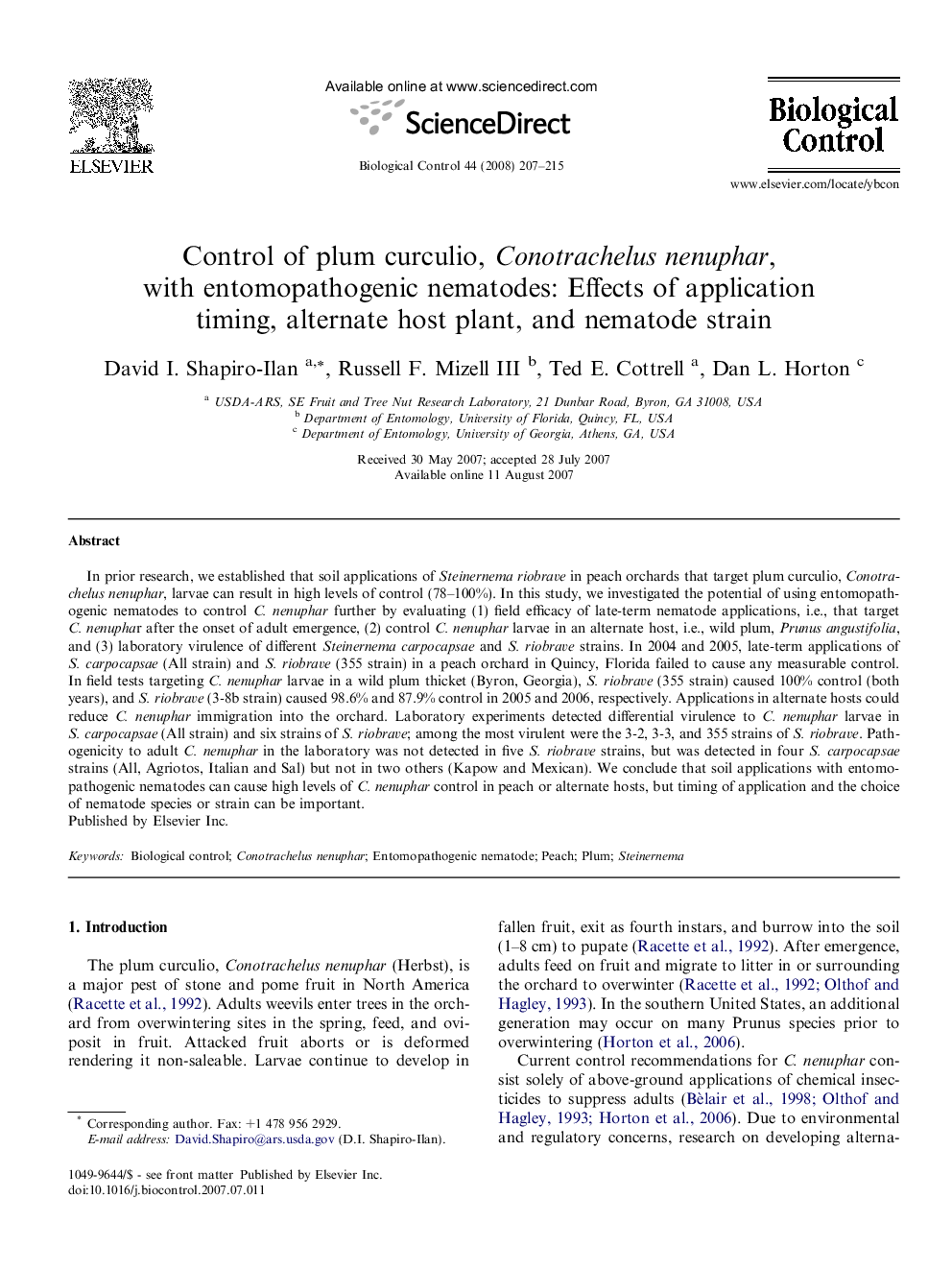| Article ID | Journal | Published Year | Pages | File Type |
|---|---|---|---|---|
| 4504900 | Biological Control | 2008 | 9 Pages |
In prior research, we established that soil applications of Steinernema riobrave in peach orchards that target plum curculio, Conotrachelus nenuphar, larvae can result in high levels of control (78–100%). In this study, we investigated the potential of using entomopathogenic nematodes to control C. nenuphar further by evaluating (1) field efficacy of late-term nematode applications, i.e., that target C. nenuphar after the onset of adult emergence, (2) control C. nenuphar larvae in an alternate host, i.e., wild plum, Prunus angustifolia, and (3) laboratory virulence of different Steinernema carpocapsae and S. riobrave strains. In 2004 and 2005, late-term applications of S. carpocapsae (All strain) and S. riobrave (355 strain) in a peach orchard in Quincy, Florida failed to cause any measurable control. In field tests targeting C. nenuphar larvae in a wild plum thicket (Byron, Georgia), S. riobrave (355 strain) caused 100% control (both years), and S. riobrave (3-8b strain) caused 98.6% and 87.9% control in 2005 and 2006, respectively. Applications in alternate hosts could reduce C. nenuphar immigration into the orchard. Laboratory experiments detected differential virulence to C. nenuphar larvae in S. carpocapsae (All strain) and six strains of S. riobrave; among the most virulent were the 3-2, 3-3, and 355 strains of S. riobrave. Pathogenicity to adult C. nenuphar in the laboratory was not detected in five S. riobrave strains, but was detected in four S. carpocapsae strains (All, Agriotos, Italian and Sal) but not in two others (Kapow and Mexican). We conclude that soil applications with entomopathogenic nematodes can cause high levels of C. nenuphar control in peach or alternate hosts, but timing of application and the choice of nematode species or strain can be important.
